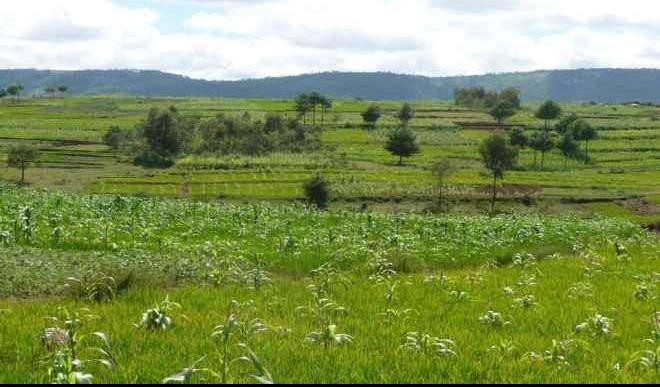
(Recommended by Africa Rice Center, IITA, Ibadan)
Choice of land
• Select your site in an ecological zone with at least 14–20 mm of five-day rainfall during the growing cycle.
• Choose fertile land with good drainage and good water retention
Capacity (contains some clay and/or organic matter, i.e. loamy soil).
Recommended upland varieties
• Early maturing (<90–100days):FARO1, 40, 45, 54, 55
(NERICA1), 56 (NERICA2), other upland NERICA
• Medium maturing (100–120 days): FARO 48, 49, 53, etc.
• Late maturing (>120days):FARO25.
Sources to contact for good quality seed
• State Agricultural Development
Projects (ADP) that includes rice in its production programs
• River Basin Development Authority.
Agricultural Seed Council
• Seed Companies.
• Other rice farmers.
Seed treatment
In area of termite and nematode problems, incorporate carbofuran (furadan) at the rate of the 2.5 kg per hectare into planting row. To ensure uniform application, Furadan should be mixed with sand at a ratio of1:4.
• Soak seeds in water for 24 hours and incubate for 48 hours before sowing to ensure uniform seedling emergence and good establishment.
Sowing time
• Savannah agroecology: May to June.
• Forest agroecology: April to May.
• Allow rains to be well
established before seeding.
• Sow seeds when the soil is moist; if possible immediately after a good rain.
Sowing methods
Direct seeding by:
• Dibbling: opening up a spot in the soil and sowing 5 to 8 seeds at a depth of 2-3cm.
• Drilling: making a small groove, 2–3 cm deep in the soil, and sowing the seeds sparsely in the groove and covering with soil.
• Broadcasting: spreading the seeds on the soil surface without any specific pattern
Thinning seedlings
• At 2–3weeks after sowing, thin the seedlings to 2–4 per stand for dibble-seeded seedlings. Density of 22–44 plants/m2 for 30×30cm and 50–100plants/m for 20 × 20 cm spacing.
• But maintain only one seedling per stand for drill-seeded seedlings. To avoid overcrowding, ensure the distance between stands of 5cm (inal density =80 plants per m2).
Fertilizers
• Fertilizers supply nutrients essential for growth, nutrition and health of the rice plant.
• Fertilizers can be applied in organic or inorganic (mineral)forms or both.
• Organic fertilizer can be in the form of manure, compost or crop residues.
• Mineral fertilizers are manufactured. It is important to apply the right quantity and at the right time to obtain optimum yields and for environmental protection.
Chemical weed control
Pre- emergence
• Apply Ronstar (oxadiazon) 25(EC)2-3 days after sowing or just after seeding at the rate of4–6 liters/ha.
• When weeds have in the field, spray Gramoxone (paraquat) at 2liters/ha but not more than 24 hours after sowing.
• DO NOT spray Gramoxone after the germination of paddy seeds, to avoid killing the seedlings
Post-emergence:
• Apply RonstarTM
(PL) at the rate of 5–6 liters/ha at 14 to 21 days after seeding.
• Use propanil (Stan F34), Tamarice or propanil-bentazon (Basagram)14 to 21 days after seeding, at the rate of 3kga.i.perhectare.
• With a knap sack sprayer, apply 220cm3 of propanil or TamariceTM,or150cm3 Basagram TM in 6liters of water.
• Any resistant weed species or newly germinating weeds like corn grass –Rottboellia cochinchinensis– should be rogued and removed from the field.
Compiled by Vincent A. Yusuf

 Join Daily Trust WhatsApp Community For Quick Access To News and Happenings Around You.
Join Daily Trust WhatsApp Community For Quick Access To News and Happenings Around You.


